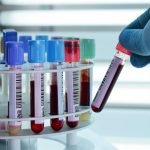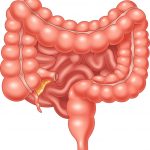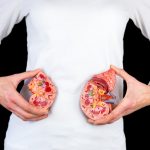Don’t Die Dieting: Minimizing the Risks of Weight Loss
CHRIS D. MELETIS, ND
Weight loss, when indicated, has always been an integral part of metabolic health and a viable defense against cardiovascular disease and diabetes. However, the COVID-era awareness of morbidity and related mortality has brought a hyper-focus to the risk of obesity as also a target for lessening susceptibility to severe illness. For example, a recent study found that after exposure to COVID-19, most of the obese people in the study produced autoimmune antibodies, whereas the lean people produced neutralizing antibodies.1
For a variety of reasons, weight loss may seem like a win-win pursuit. However, as naturopathic physicians and functional medicine providers, we need to be acutely aware of the risks associated with mobilizing toxins during weight loss that have bio-accumulated over the months and years in our patients’ adipose tissue. In addition, there are other factors that should be addressed in order to safely support weight loss. This article will discuss those factors and, in so doing, raise the question: Can we really assume a person is prepared for weight loss just because he or she is now ready to take the steps to do so?
The Obesity / Weight Loss Paradox
Weight loss has a number of health benefits. Yet, an obesity paradox exists, whereby some studies have found obese and overweight people to have a better prognosis and lower mortality compared to people with normal body weights. One example of this is the reduced risk of dementia in obese subjects.2
An abundance of evidence indicates that the obesity paradox can be explained by the release of toxins that occurs during weight loss.2,3 Adipose tissue is a known reservoir for toxins, and, ironically, these toxins may have contributed to weight gain in the first place. However, the storage of persistent organic pollutants (POPs) in adipose tissue can prevent its build-up in other organs, thereby protecting against the otherwise-toxic effects of POPs.2 Although the production of POPs has been banned for years, they are resistant to breakdown and therefore remain in the environment.
Hong and colleagues found lower mortality in obese elderly who had a higher body burden of POPs, a pattern that did not exist in obese elderly with a lower body burden of the toxins.3 This led them to conclude, “Although weight loss may be beneficial among the obese elderly with low POP concentrations, weight loss in the obese elderly with higher serum concentrations of POPs may carry some risk.”
The abrupt release of toxins that occurs during weight loss also happens after bariatric surgery. In a study of 26 people, researchers investigated the changes in POPs, including concentrations of polychlorinated biphenyls (PCBs) and perfluorochemicals (PFCs), after bariatric surgery. The study found that blood POP levels increased during weight loss. Specifically, the researchers observed greater increases in PCBs, organochlorine pesticides (OCPs), and polybrominated diphenyl ethers associated with weight loss in the older subjects, while younger participants had greater increases in PFCs during weight loss.4
In a larger study of 63 participants, researchers collected serum samples before and 1 year after bariatric surgery.5 The subjects lost a mean of 70 pounds over the course of a year. The study authors measured levels of POPs in the samples and found that after weight loss there was a 46.7-83.1% increase in serum POP levels.
There is evidence that not all fat is created equal in regards to releasing toxins. For example, one study found that the greatest release of toxins occurred in people who lost visceral adipose tissue compared to subcutaneous fat.6 This effect was only observed in the patients undergoing dieting and not in the patients who lost weight through bariatric surgery.
Although fat storage of POPs may be considered protective, the toxins sequestered in fat tissue are not completely harmless, as they can exert inflammatory changes in the adipose tissue and be slowly released into the bloodstream over time.7
The Importance of Detoxification
Mitochondria & Fatty Liver Disease
Toxins such as POPs are known to damage the mitochondria.8 This results in a catch-22 situation, as damaged mitochondria can promote additional weight gain.9 Specifically, changes in mitochondrial function can alter pathways that regulate feeding behavior and are related to alterations in food intake, energy balance, and the development of obesity.9
Each and every day, our cells are damaged and die, releasing enzymes such as those seen in the liver. The obesity epidemic has led to a rise in non-alcoholic fatty liver disease (NAFLD), and notable evidence exists that toxins and mitochondrial dysfunction are contributing to NAFLD.10-12
After a routine chemistry panel reveals elevated liver enzymes, we may refer our patients for an ultrasound that indicates fatty liver infiltration. At this point, our first inclination is usually to urge them to lose weight. Instead, it’s a good idea to pause and ponder the best way to detoxify their bodies. Otherwise, engaging a patient in a rigorous weight loss program without safe detoxification may increase the burden on the hepatocytes, kidneys, gastrointestinal (GI) tract, and every other cell within the body.
Testing of Organic Acids & Environmental Pollutants
The best way to identify the presence of toxins in patients prior to undergoing weight loss is to order an organic acid test with an environmental pollutants panel. One of the more popular commercial labs offers a quantitative measurement of 14 select metabolites that can help define an individual’s toxic burden. The test detects the presence of POPs such as xylene, toluene, benzene, trimethylbenzene, and styrene, as well as chemicals such as phthalates, parabens, and methyl tert-butyl ether. This panel allows me to better support, in a focused manner, the detoxification of pollutants that could be released during weight loss. The organic acid component of the test is important for other reasons, which we’ll address in a moment.
Supporting Detox Pathways
One of the liver’s most important roles is to defend the body against toxins. Daily, we’re exposed to countless toxins in food, water, and the air. Many of these substances are lipophilic and therefore tend to remain in the body for long periods. The liver possesses enzyme systems to transform these toxins into less harmful substances.13
Supporting detoxification pathways is critical to preventing the mobilization of toxins during weight loss. In these detox pathways, fat-soluble toxins are converted into water-soluble substances for easier removal from the body. The Phase 1 detoxification pathway, if not supported with ample antioxidants like vitamins C and E, can result in the overproduction of free radicals. The Phase 2 pathway is equally important. It is in the Phase 2 pathway that a lipid-soluble toxic substance is converted via conjugation into one that is water-soluble, hence more easily excreted via urine or bile.
Two simple ways to support detoxification include ensuring that patients 1) have 2-3 bowel movements per day and 2) drink plenty of fluids in order to stay well hydrated and able to flush toxins out of the body. Eating more fiber and supplementing with magnesium can promote healthy bowel movements. Fiber can bind toxins, while an ample number of bowel movements decreases reabsorption of toxins. Patients should be encouraged to drink plenty of fluids per day: 15.5 cups for men and 11.5 cups for women, with 20% of that fluid intake derived from food.14
Furthermore, sulfur-containing foods and amino acids such as taurine and cysteine can support healthy Phase 2 detoxification. Curcumin can inhibit Phase 1 detoxification while stimulating Phase 2. This is useful because some toxic substances are activated by Phase 1 detoxification and must be neutralized by Phase 2.
Evidence indicates there is an additional detoxification pathway in the small intestine called antiporter activity, which is referred to as the Phase 3 detoxification system.15 This system, which transports toxins from cells into the small intestine,16 confirms the important role the gut plays in detoxification.
The Gut’s Role in Detoxification
The antiporter system pumps conjugated toxins into the bile and intestinal lumen so that they can be excreted from the body.16 During this process, diet and the gut microflora play important roles in effectively eliminating these compounds.
Conversely, deconjugation of the toxic metabolites by bacterial enzymes such as beta-glucuronidase can cause the toxins to reenter the enterohepatic recirculation and be deposited back in the liver. This deconjugation and recirculation may occur due to dysbiosis of the gut microbiota.17 This indicates that diet and probiotic supplementation may help support normal detoxification pathways. Furthermore, calcium-D-glucarate, a nutrient found in grapefruit, apples, oranges, broccoli, and Brussels sprouts, and which is also available as a dietary supplement, enhances the excretion of conjugated toxins by blocking beta-glucuronidase activity in the intestine.18
Intestinal Permeability
Because the gut is an important player in detoxification, it’s essential to strengthen gut function and eliminate increased intestinal permeability (aka, leaky gut) before or during a weight loss program. A leaky gut can allow toxins to escape into the systemic circulation,19 which can then be redistributed and/or reabsorbed.
A marker of intestinal permeability is zonulin, a protein that regulates the tight junctions between cells in the intestine. Higher levels of zonulin increase leaky gut.19 In a study of patients with NAFLD undergoing weight loss, increasing fiber in the diet led to a 90% reduction in zonulin, which in turn was associated with reduced hepatic steatosis, likely by altering intestinal permeability.19 This is the reason why I test for zonulin and other markers of intestinal permeability in patients undergoing weight loss. Additional biomarkers of intestinal permeability or inflammation include lactoferrin, calprotectin, and elevated sIgA. These metrics can be used to point to irritation or inflammation within the GI tract.
Eating the Right Foods While Dieting
Any change in diet for any reason (including that which occurs during weight loss) will have a ripple effect within the body, from a micro/macronutrient and phytonutrient perspective. Yet, even a “healthy food” choice may not be a wise choice for a given patient. A prime example of this is IgG or IgA food intolerances/sensitivities. These differ from food allergies, which are mediated by IgE antibodies. IgG- and IgA-mediated food intolerances/sensitivities are caused by increased gut permeability, which leads to food particles escaping into the systemic circulation and the production of food-specific IgG antibodies.20
Russian researchers diagnosed food intolerance to 13 food products in 32.6-33.4% of obese patients.21 According to the researchers, “The changes in immune status in obese patients created conditions for development of food intolerance. The timely diagnosis of food intolerance allows [us] to personalize the diet therapy.”
Thus, it is helpful to recognize that patients are immunologically unique beings. My own approach is to test a patient for food intolerances/sensitivities before I change their diet, and ideally with a broad panel of 208 foods and spices. I have found spices such as ginger, turmeric, and oregano can be grand saboteurs that are all too often overlooked because they are used in such small quantities unless used therapeutically. By performing food sensitivity/intolerance testing for IgG- and IgA-mediated reactions along with IgE allergy testing, patients can make empowered choices.
Not only does this approach support patients during weight loss; we also endeavor to create for our functional medicine patients a program that ideally can help sustain wellness for a lifetime, long after lean body mass goals are achieved.
Avoiding Histamine-Rich Foods
As a patient changes his or her diet, functional medicine providers should also be aware of the possible adverse effects of histamine-containing foods. When dieting, patients often include seemingly healthy foods such as nuts or spinach. However, foods like these may contribute to histamine burden (Table 1).
Table 1. Histamine-Rich Foods and Beverages
| Fish (Frozen/Smoked or Salted/Canned) | Mackerel, Herring, Sardine,Tuna |
| Cheese | Gouda, Camembert, Cheddar, Emmental, Swiss, Parmesan |
| Meat | Fermented Ham, Salami, Fermented Sausage |
| Vegetables | Sauerkraut, Spinach, Eggplant |
| Condiments | Tomato ketchup, Red wine, vinegar |
| Alcohol | White Wine, Red Wine, Top-fermented beer, Bottom-fermented beer, Champagne |
| Fruit | Citrus, Papaya, Strawberries, Pineapple |
| Other | Nuts, Chocolate, Spices, Pork, Egg white, Crustaceans, Tomatoes, Peanuts, Any food that’s undergone fermentation |
Histamine-rich foods and beverages like nuts, certain cheeses, salami, sauerkraut, and some alcohol and seafood can contribute to allergic, inflammatory, and neurochemistry-related changes.22 This is especially true in patients suffering from histamine intolerance, ie, the inability to degrade accumulated histamine.
Common symptoms of histamine intolerance22 include:
- Menstrual-cycle-related headaches
- Dysmenorrhea
- Diarrhea
- Nasal congestion
- Runny nose and watery eyes
- Wheezing
- Hypotension
- Arrhythmia
- Urticaria
- Pruritis
- Flushing
There are no specific tests for histamine intolerance; however, measuring levels of the diamine oxidase (DAO) enzyme, which breaks down histamine, can help determine whether to pursue this line of treatment. DAO is synthesized in the intestines, so if intestinal health is suffering, levels of this enzyme may be too low to effectively degrade histamine. Another option is simply to place a patient on a low-histamine diet for 4 weeks, observe whether there’s any improvement, and then gradually add foods back in to see if the patient reacts to them.
It’s interesting to note that nuts have other potentially harmful properties other than just high histamine concentrations. For example, nuts can be contaminated with high levels of aflatoxin, a well-known carcinogen and risk factor for hepatocellular carcinoma.23 Patients with NAFLD already have a 7-fold increased risk of developing hepatocellular carcinoma, as compared with the general population.23 Therefore, advising this group of patients to avoid nuts while dieting may be prudent.
Nutrient Deficiencies & Tissue Perfusion
Prior to undertaking a weight loss program that will involve a change in diet, patients should be well-fortified with ample nutrients. A simple urinary organic acids test can provide insights into how a patient’s proteins, carbohydrates, and fats are feeding into the citric acid cycle and help identify which nutrients may be insufficient. Additionally, quantification of the metabolism from acetyl-CoA to citrate, cis-aconitate, isocitrate, alpha-ketoglutarate, succinate, fumarate, malate, and orotate can allow clinicians to strategically target nutrients that may be insufficient and help ensure more optimal fueling of the citric acid cycle as well as ATP production in the mitochondrial electron transport chain. One of the most common nutrients that I find insufficient when performing such testing is NAD+. Hence, I routinely recommend NAD+ supportive nutrients, such as nicotinamide riboside, which enhances mitochondrial function and protects against high-fat-diet-induced obesity.24
While undergoing weight loss, oxygen and nutrients must be delivered to the liver, kidneys, skin, and intestines to allow nourishment to these vital organs and to promote the ability to handle successful detoxification of the toxins we’re exposed to daily, let alone the excess toxins liberated during weight loss. Consequently, I will ensure optimal circulation by testing my patients via a simple nitric oxide salivary test strip. Nitric oxide is involved in optimal blood flow. When it’s low in one of my patients, I will recommend a nitrate-rich supplement containing beetroot.25 Low nitric oxide levels are a common finding in obese patients, who have been found to synthesize less of this important dilator, especially if they have metabolic syndrome.26
Thyroid Health During Weight Loss
A possible way to speed up the metabolism and burn more calories is to support thyroid health, as hypothyroid function is associated with weight gain.27 This is generally not considered a medically approved weight-loss approach. Yet, before we throw the baby out with the bath water, we must remember that our liver, kidneys, GI function, and cellular metabolism are all driven by thyroid hormone. Possibly even more important is the fact that a T3 (triiodothyronine) receptor exists on the mitochondrial membrane,28 indicating that thyroid hormone is important for mitochondrial function and ATP synthesis via the mitochondria and electron transport chain.
Thyroid hormones have long been known to have calorigenic properties.28 It is now thought that thyroid hormones’ effects on weight loss involve their effects on the mitochondria, which serve as the headquarters for many pathways involved in metabolism.28 This is why I often focus on supporting thyroid and mitochondrial health in patients undergoing weight loss.
Conclusion
Certain steps should be taken before implementing a weight loss program, especially identifying the extent of the patient’s toxic burden and then recommending detoxification strategies. Food sensitivity/intolerance testing prior to undertaking the dietary changes necessitated by weight loss plans is important to ensure patients are not eating foods that are sabotaging their health. Nourishing the gut microbiome, rejuvenating the mitochondria, and supporting thyroid health are important ways to assure safe weight loss. There is no more exciting thing for me as a clinician than to know that I have created a sustainable ecology and microecology within the trillions of cells of the human body, while fueling each patient with immune-acceptable foods that will not burden their body in pursuit of nourishment.
References:
- Frasca D, Reidy L, Romero M, et al. The majority of SARS-CoV-2-specific antibodies in COVID-19 patients with obesity are autoimmune and not neutralizing. Int J Obes (Lond). 2021:1-6.
- Lee YM, Kim KS, Jacobs DR, Jr, Lee DH. Persistent organic pollutants in adipose tissue should be considered in obesity research. Obes Rev. 2017;18(2):129-139.
- Hong NS, Kim KS, Lee IK, et al. The association between obesity and mortality in the elderly differs by serum concentrations of persistent organic pollutants: a possible explanation for the obesity paradox. Int J Obes (Lond). 2012;36(9):1170-1175.
- Brown RH, Ng DK, Steele K, et al. Mobilization of Environmental Toxicants Following Bariatric Surgery. Obesity (Silver Spring). 2019;27(11):1865-1873.
- Jansen A, Polder A, Müller MHB, et al. Increased levels of persistent organic pollutants in serum one year after a great weight loss in humans: Are the levels exceeding health based guideline values? Sci Total Environ. 2018;622-623:1317-1326.
- Dirinck E, Dirtu AC, Jorens PG, et al. Pivotal Role for the Visceral Fat Compartment in the Release of Persistent Organic Pollutants During Weight Loss. J Clin Endocrinol Metab. 2015;100(12):4463-4471.
- La Merrill M, Emond C, Kim MJ, et al. Toxicological function of adipose tissue: focus on persistent organic pollutants. Environ Health Perspect. 2013;121(2):162-169.
- Kim JT, Lee HK. Metabolic syndrome and the environmental pollutants from mitochondrial perspectives. Rev Endocr Metab Disord. 2014;15(4):253-262.
- Lahera V, de Las Heras N, López-Farré A, et al. Role of Mitochondrial Dysfunction in Hypertension and Obesity. Curr Hypertens Rep. 2017;19(2):11.
- Deierlein AL, Rock S, Park S. Persistent Endocrine-Disrupting Chemicals and Fatty Liver Disease. Curr Environ Health Rep. 2017;4(4):439-449.
- Jin J, Wahlang B, Shi H, et al. Dioxin-like and non-dioxin-like PCBs differentially regulate the hepatic proteome and modify diet-induced nonalcoholic fatty liver disease severity. Med Chem Res. 2020;29:1247-1263.
- Simões ICM, Fontes A, Pinton P, et al. Mitochondria in non-alcoholic fatty liver disease. Int J Biochem Cell Biol. 2018;95:93-99.
- Grant DM. Detoxification pathways in the liver. J Inherit Metab Dis. 1991;14(4):421-430.
- Water: How Much Water Should You Drink Everyday? Mayo Clinic. https://www.mayoclinic.org/healthy-lifestyle/nutrition-and-healthy-eating/in-depth/water/art-20044256. Accessed December 2, 2021.
- Liska DJ. The detoxification enzyme systems. Altern Med Rev. 1998;3(3):187-198.
- Xu C, Li CY, Kong AN. Induction of phase I, II and III drug metabolism/transport by xenobiotics. Arch Pharm Res. 2005;28(3):249-268.
- Leung JW, Liu YL, Leung PS, et al. Expression of bacterial beta-glucuronidase in human bile: an in vitro study. Gastrointest Endosc. 2001;54(3):346-350.
- Calcium-D-Glucarate. Monograph. Altern Med Rev. 2002;7(4):336-339.
- Krawczyk M, Maciejewska D, Ryterska K, et al. Gut Permeability Might be Improved by Dietary Fiber in Individuals with Nonalcoholic Fatty Liver Disease (NAFLD) Undergoing Weight Reduction. Nutrients. 2018;10(11).
- Shakoor Z, AlFaifi A, AlAmro B, et al. Prevalence of IgG-mediated food intolerance among patients with allergic symptoms. Ann Saudi Med. 2016;36(6):386-390.
- Sentsova TB, Gapparova KM, Grigor’ian ON, et al. The clinical and immunological manifestations of food intolerance in obese patients. Vopr Pitan. 2012;81(5):83-87. [Article in Russian]
- Maintz L, Novak N. Histamine and histamine intolerance. Am J Clin Nutr. 2007;85(5):1185-1196.
- Plaz Torres MC, Bodini G, Furnari M, et al. Nuts and Non-Alcoholic Fatty Liver Disease: Are Nuts Safe for Patients with Fatty Liver Disease? Nutrients. 2020;12(11):3363.
- Cantó C, Houtkooper RH, Pirinen E, et al. The NAD(+) precursor nicotinamide riboside enhances oxidative metabolism and protects against high-fat diet-induced obesity. Cell Metab. 2012;15(6):838-847.
- Clifford T, Howatson G, West DJ, Stevenson EJ. The potential benefits of red beetroot supplementation in health and disease. Nutrients. 2015;7(4):2801-2822.
- Siervo M, Jackson SJ, Bluck LJ. In-vivo nitric oxide synthesis is reduced in obese patients with metabolic syndrome: application of a novel stable isotopic method. J Hypertens. 2011;29(8):1515-1527.
- Chaker L, Bianco AC, Jonklaas J, Peeters RP. Hypothyroidism. Lancet. 2017;390(10101):1550-1562.
- Cioffi F, Senese R, Lanni A, Goglia F. Thyroid hormones and mitochondria: with a brief look at derivatives and analogues. Mol Cell Endocrinol. 2013;379(1-2):51-61.

Chris D. Meletis, ND is an educator, international author, and lecturer. He has authored 18 books and more than 200 scientific articles in prominent journals and magazines. Dr Meletis served as Dean of Naturopathic Medicine and CMO for 7 years at NUNM. He was recently awarded the NUNM Hall of Fame award by OANP, as well as the 2003 Physician of the Year by the AANP. Dr Meletis spearheaded the creation of 16 free natural medicine healthcare clinics in Portland, OR. Dr Meletis serves as an educational consultant for Fairhaven Health, Berkeley Life, TruGen3, US BioTek, and TruNiagen. He has practiced in Beaverton, OR, since 1992.










